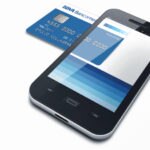Smartphones serve as technology accelerators in Mexico
As the great Pedro Vargas – and later Vicente Fernández – already sung decades ago in “El Rey”: ...“you do not have to get there first, but you need to know how get there,” (“no hay que llegar primero pero hay que saber llegar”). Something similar has taken place in Mexico. It may not have been the first one in the race towards digital revolution or in the adoption of new technologies, but it is proving that it knows “how to get there.”

Internet’s penetration index improves year after year, and the arrival of smartphones has acted as a catalyst in a society that, little by little, is embracing technological change. Based on Internet connection figures, Mexico is on the right track. According to the Mexican Internet Association (Amipci), there were 65 million Internet users in Mexico at the end of 2015 – a 59% penetration. These figures are confirmed by the data released by Mexico’s National Institute of Statistics and Geography. Also, 70.5% of Mexican internet users are aged under 35, while 91.1% of users are recurrent users – one or more days per week.
However, the more promising data are being seen in the mobile telephony segment, specifically in terms of growth in the smartphone market. According to the Innovation Index of Society report that IDC released on January 2016, in 2015 there were 104 million mobile lines (and 68.3 million smartphones, more than half the population). As of the second quarter of the present year, there were 109.7 million mobile lines, with 82 million smart devices, 30.9% more than during the same period of the previous year.
Mexico’s “technological maturation” confirms that the conditions are already there to take a new leap forward in this long-distance race and to start using, for example, the mobile channel to access value-added services, such as financial services.

Mexico’s “technological maturation” confirms that the conditions are already there to take a new leap forward in this long-distance race and to start using, for example, the mobile channel to access value-added services, such as financial services.
BBVA has paid close attention to these changes in habits among the Mexican people to offer relevant applications to its customers. BBVA Wallet recently surpassed the 5 million download barrier globally. Mexico alone represents one million of these downloads. This BBVA app stands out not only because of the number of downloads, but because of its rapid growth. By February it had been downloaded 3 million times. In June, it hit 4 million and more than 5 million two months later.
Since it is a global product, BBVA has adapted BBVA Wallet to the unique needs and characteristics of each place. Today, the app is active in Spain, the U.S., Turkey, Chile and Mexico. In Mexico, the app allows users to control all their cards from their cell phones. It is also especially useful for online shopping, as it can create different passwords (tokenization) for every transaction, making it safer to shop online, which is becoming more and more common in this market.
This is just a sample of BBVA’s digitization strategy. At the end of the second quarter of 2016, BBVA had 16.4 million digital customers who engage with the bank on the Internet or on their cell phones – up 21% from June 2015. Of this amount, 10.2 million are now mobile banking customers- 45% more than last year. In the case of Mexico, BBVA has boosted digital sales, managing to increase the number of transactions from 12.3% in Mexico in the six-month period leading to June.
These figures tell us that the way forward is giving users the necessary tools to communicate with their bank whenever they want, using the most convenient channel.